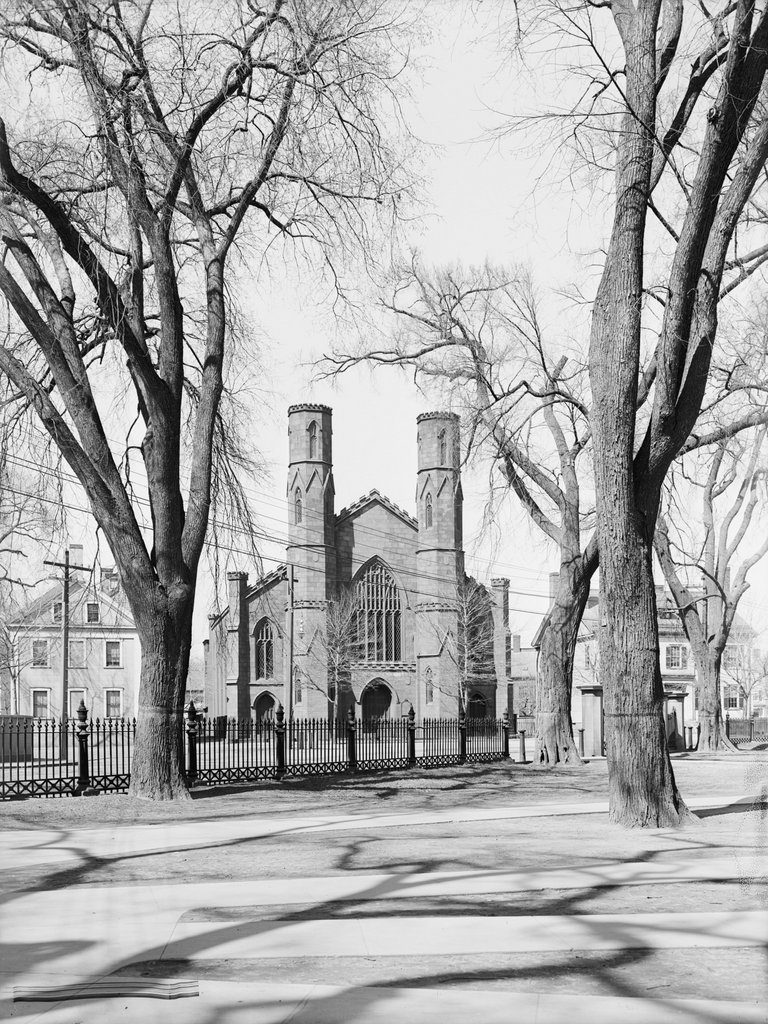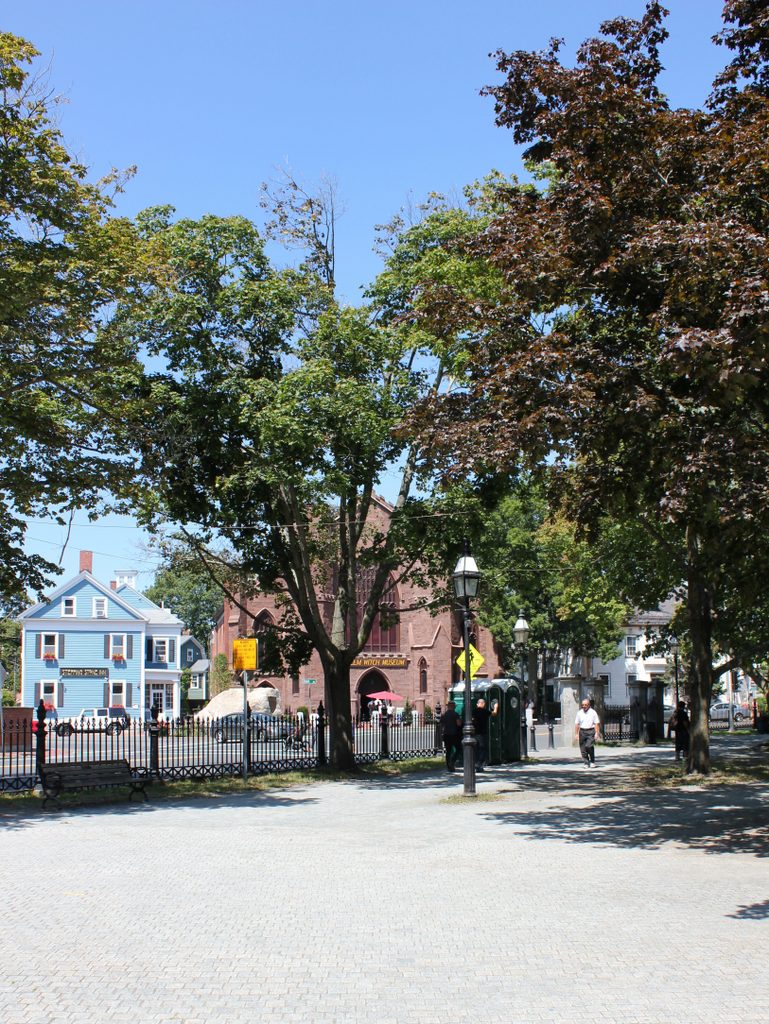East Church on Washington Square North in Salem, seen from the Salem Common around 1910. Image courtesy of the Library of Congress, Detroit Publishing Company Collection.
The scene in 2017:
Salem’s East Church was established in 1718, when residents in the eastern part of the town left the First Church. They constructed a church building at the present-day corner of Essex and Hardy Streets, and worshiped there for more than 125 years. During this time, the church transitioned from traditional Puritan theology to, by the late 18th century, liberal Unitarian beliefs. This was largely because of William Bentley, who served as pastor from 1783 to 1819. He gained prominence as a pastor and as a journalist, regularly writing for the Salem Gazette, and Thomas Jefferson offered him a position as the first president of the University of Virginia. However, Bentley did not want to leave the East Church, and he remained there until his death in 1819.
The congregation left its old building in 1846, upon the completion of this Gothic Revival-style brownstone church at the corner of Washington Square North and Brown Street, across from the Salem Common. It was designed by noted architect Minard Lafever, and originally featured two tall towers at the front of the building, as shown in the first photo. Along with this, the building’s design included other distinctive Gothic elements, such as the tall, narrow windows, the pointed arches over the doorways and windows, and the crenelation along the roofline and atop the towers.
In 1897, the East Church merged with the Barton Square Church and was renamed the Second Unitarian Church. The building was damaged by a fire in 1902, but it was repaired and the church continued to worship here throughout the first half of the 20th century. The first photo was taken around 1910, showing the church as it appeared after the fire, but before the towers were reduced to their present height around 1925.
The church closed in 1956, following a merger with the First Church, and the two congregations were reunited nearly 250 years after their separation. No longer needed as a church, this building became the Salem Auto Museum and Americana Shops. However, another major fire in 1969 caused significant damage to the interior of the building, and destroyed much of the museum’s collections. The building was restored, though, and the interior was rebuilt to house the Salem Witch Museum, which opened here in 1972.
Today, the Salem Witch Museum is still located here in the building. Very little is left of the original interior, but the exterior has remained well preserved over the years, aside from the shortened towers. The houses on both sides of the first photo are also still standing, with the Abraham True House (1846) on the left, and the Captain Nathaniel Weston House (1837) on the right. These houses, along with the church and a number of other historic buildings in the area, are now part of the Salem Common Historic District, which was added to the National Register of Historic Places in 1976.


